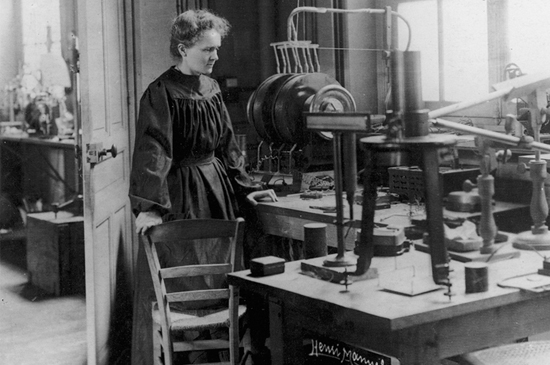
Debt to
The Bone-Eating
Snotflower
Sarah Lindsay
(Copper Canyon Press)

Ms. Lindsay has an affection for slippery sea-creatures: whales, squid, and cephalopods (octopi). Especially the latter. Quite a few of the sixty poems here are songs of praise for the lowly octopus. Lowly, but not dumb. Scientists assure us that these eight-armed creatures are quite handy with their many arms which can be feet as well . . . to walk themselves over sea bottoms. In emergencies they're able to yank a coconut shell over their heads for protection, even slip through a keyhole if they must.Jules Verne made it a creature to be feared, especially when it went after the Nautilus and tried to eat it for lunch. I well remember that scene in the Disney version of Twenty Thousand Leagues Under the Sea, where that beast came after Nemo's crew and had to be fought off by Mason the Brave. The beak-like appendage at the center of the creature's body looked faintly vulgar, a bit of 1950s comic sexism at its worst.
Ms. Lindsay has a warmer (and more gentle) view of the simple cephalopod, writing
The octopus has no bones
the octopus has no voice,
Her mouth is in her armpit,
her body in her head.
She scarcely has a face.
Her eyes are purple squares
in domes with fleshy lids.
She spurts a purple cloud
and safe behind it flies...But she does admit, "her curling makes me shiver / when I should be moved to praise."
The biggest octopus of them all, Enteroctopus dofleini, can grow to 600 pounds, with a reach of thirty feet, and if one ever caught you, evidently he or she can drill a hole in your brainbox and freeze you with a jolt of spit, then leisurely wrench you asunder to savor your salty, meaty flavor.
Octopologists (or whatever they call those who study dofleini) tell us that these creatures have the taste of a professional wine taster. How in hell they discover such facts is not explained; nor is there a reason given for why anyone in their right mind would be checking out octopus taste-buds. What flavor you and I might have as we are being dismembered for canapés in the octopus' garden is not revealed. Nor if we are to be served with white or red wine.
It seems to me that Ms. Lindsay must think that she is one of these eight-armed creatures herself. In Cephalopod and Star and Sea she reveals that her left hand is an octopus with fingers that "twine and twirl apart / like thoughts that tangle." (Her right hand is merely a starfish.)
§ § § Lindsay enjoys inside jokes, and makes us enjoy them too as soon as we can figure out what she's going on about. "Aunt Lydia Attempts a Few Observations" is a verse poem with a cryptic reference that might be lost on those of us who often played hooky from our General Sciences class, especially on the day when they did quantum mechanics with a passing reference to Schrödinger's Cat.
Her exploration of it takes but 50 lines and 200 words and makes a helluva lot more sense than that roomful of blather from our physics teacher, Dr. Peavey which failed to enlighten us, made us sure that our future lay with what they then called the humanities rather than with those entangling paradoxes out of Einstein:
I suppose you've heard
of the theoretical cat,
trapped in a box, that is both alive and dead
until someone lifts the lid
and then it's not.As you may guess from the title of this collection, invertebrates like squid, snails, worms, cuttlefish, and annelids have won Lindsay's heart, although the snarky flower in the title does not turn up in my ancient and sedate New Collegiate Dictionary: it shows nothing of note between "snorter" (a "humdinger") and "snout" (from the German schnauze). Somewhere though I read that it is a marine worm so-called because it lives off whale bones, looks like a flower, and is covered in mucus gack.
Also, there is an explanation in the title poem, tucked away in the poem itself. Lindsey says that she's referring to the common Osedax mucofloris, a creature that eats calcium. She says that if it were not for this kindly worm, our seashores would be littered by whale-bone up to here, and "The tides / would rattle."
So the common snotflower is not unlike earthworms "that stir our fields from below." If you suspect that the poet is only playing with our allergy to goo, I must tell you it is not so. On the contrary, she offers --- even makes beautiful --- quite startling creatures, beasts that we could never have dreamed of, "the smudge, the slime, the particles / in their modest trillions"
that shield us from excess
while ignoring us too ---
and further kindly
keep their slurps and snips and whisks
and hooverings from evolving beyond the sky,
where they might tidy away dark matter and leave us
sleep-less under the unbroken sheets of stars.I suspect that here Ms. Lindsay is playing a rôle not unlike the great science popularizers like Carl Sagan, Loren Eiseley, Richard Dawkins and my own favorite, J. Bronowski. She reinforces the fact that many of the words of biology are in themselves innately poetic. We find them sprinkled through the poems here, words and phrases with their own rhythm and succulence, pure music: endoplasmic reticulum, Golgi apparatus, snailfish, Staphylococcus bacteria, Jerico worms, Leviathan, tyrannosaurs, cilia --- words with a sonorous grace, words that sing to us, as poetry should sing to us.
Lindsay is a dandy writer. With her words we are able to feel a part of --- we are a part of --- the evolution and earliest manifestation of the cell:
The first cell felt no call to divide.
Fed on abundant salts and sun,
still thin, it simply spread,
rocking on water, clinging to stone,
a film of obliging strength,
Its endoplasmic reticulum
was a thing of incomparable curvaceous length;
its nucleus, Golgi apparatus, RNA
magnificent. With no incidence
of loneliness, inner conflict, or deceit,
no predator or prey,
it had little to do but thrive,
draw back from any sharp heat
or bitterness, and change its pastel
colors in a kind of song.
We are descendants of the second cell.

The woman in the poem "Radium" is unnamed, but it has to be Marie Curie, "aglow with determination." With husband Pierre she stumbles across "memories that glow in the dark,"It permeated their clothes, their papers,
Finally "Aunt Lydia's Junk Drawer Anticipates the Day of Judgment" lets the poet move so subtly that she can write of the day of judgment in "a catchall drawer" that echoes and echoes well a line from "The Messiah."
peeled their fingers,
entered their marrow and slowly burned. . . .
He mildly alluded to rheumatism.
He stroked her radioactive hair
with a radioactive hand.The rusty pin, the nutless bolt,
one battery left in a package that held four,
the small box full of cotton,
they shall rise incorruptible,
radiant with their essential beauty,
and, best of all, useful and put to use.--- Pamela Wylie